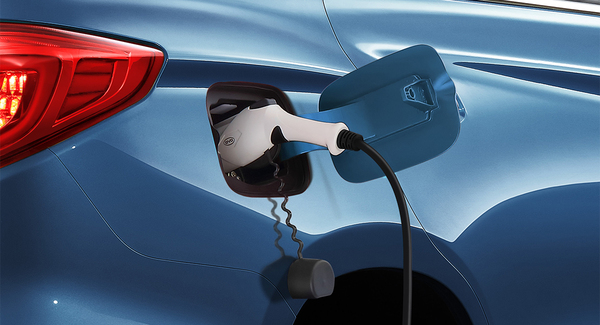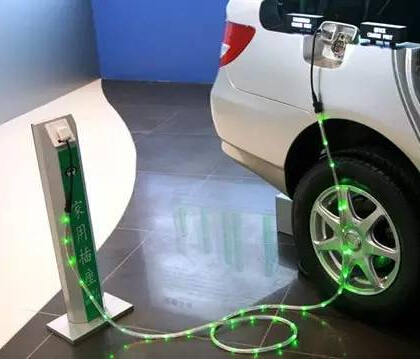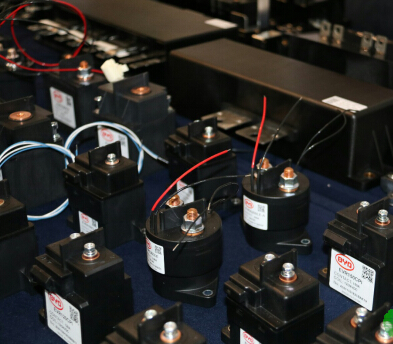Since the renaissance of modern trams, the cities that have been applied worldwide have been growing year by year, and China has also set off a boom in the development of trams. By the end of 2014, nearly 100 cities in China have proposed the development intention or planning of modern trams, but only 17 cities have been completed or put into implementation. Therefore, the overall development of domestic trams can be summarized as active planning. The implementation is slow. As far as the cities that have been operated and under construction are concerned, compared with the urban built-up areas, the modern trams in the new districts have a high proportion and a high speed of advancement. Therefore, it is necessary to explore the applicability of modern trams from the perspective of the development needs of the new district.
1 Overview of the development of domestic trams
By the end of 2014, nearly 100 cities across the country had proposed the planning of modern trams, including 6 cities including Tianjin, Shanghai, Shenyang and Suzhou, and 11 cities in Nanjing, Guangzhou, Shenzhen and Zhun'an. Modern tram lines are under construction or ready for construction.
Among the 6 cities in China that have already operated trams, Changchun and Dalian have retained the original traditional tram lines in the city center and transformed them. Shanghai, Tianjin, Shenyang and Suzhou all plan to be in the new urban area. Tram network and new lines. Among them, Tianjin TEDA and Shanghai Zhangjiang opened the first tram line in 2006 and 2009 respectively. The Shenyang Weinan New District built the first domestic tram network in 2013 and operated. After that, Suzhou High-tech Zone also entered The construction and operation stage of the tram network. In addition, the trams in Nanjing Hexi New City, Chengdu Tianfu New District, Shenzhen Longhua New District, and Wuhan Economic and Technological Development Zone have started construction. See Table 1 [1] for details. It can be seen that the development of modern trams in the new district/new city is more active and more willing to implement and more powerful than the general mature built-up areas. This is closely related to the development needs of the new district and the characteristics of the tram system.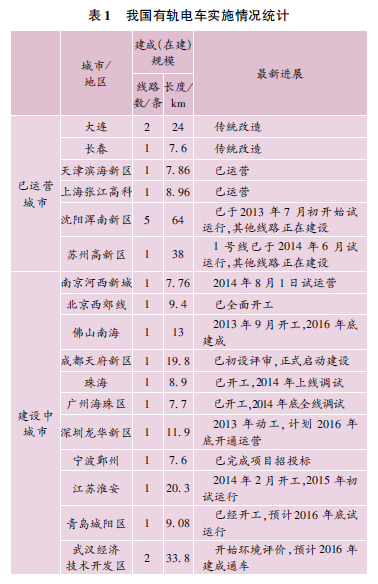
2 Research on the development characteristics of domestic new districts
2.1 Production of new districts
Affected by the acceleration of the urbanization process, after 2000, it was the time when the new districts of our country were concentrated. By the end of 2014, there were hundreds of various planned new districts in China. Most of the new districts are designed to solve the shortcomings of the existing built-up areas in the city, such as high density and heavy load, and concentrated development on the periphery of the built-up area. Although the development conditions and planning objectives of each new district are different, they have certain common characteristics compared with the existing built-up areas of the city. For example, the urbanization level of the new district is low, and the staged characteristics of the policy are obvious, and the regional industrial function needs are large. High-end, green, and intensive are the core objectives.
2.2 Typical characteristics of the new district
2.2.1 The initial level of urbanization is low.
The development of the new district is a process of change from nothing to small. Its early urbanization level is low, its population size is small, its land function is single, and public services are weak. In the process of development, it is guided by subjective planning and its characteristics are obvious. For example, Ningbo Hangzhou Bay New District has experienced three different stages since the establishment of the development zone in 2001. The development speed is fast and the stage characteristics are obvious: in November 2001, the predecessor of Ningbo Hangzhou Bay New District, Zhejiang Cixi Economic Development Zone Start development and aim at the industrial development zone; in February 2010, Ningbo Hangzhou Bay New District Development and Construction Management Committee was formally established to clarify the needs of regional comprehensive functions; in February 2014, it was upgraded to a national economic and technological development zone. The total population increased from 126,000 to 194,000 between 2009 and 2013, with an average annual growth rate of 11%. The construction land is expanding at a rate of 3 to 4 km2 per year. It is a typical example from pure industry→industrial+support→integrated new city. The process of transformation.
2.2.2 The new district has a high demand for spatial structure expansion
The urban spatial layout and planning of the new district are characterized by holistic, planned and efficient, but at the beginning of development, extensive land use patterns are adopted. In the new area where the development zone is the predecessor, most of the land has been used to build low-end industrial plants in the early stage, the remaining land resources are scarce, and the regional structure is disordered [2 3]. For the “opening up” new areas without development basis, more spare land is built. However, the lack of historical inheritance constraints, because the project needs often build more, in the construction process, easy to lead to deviations between construction and planning due to short-term interests. Therefore, the planning of the new district often uses the leading role of transportation, especially the direction of the public transportation system, stretching the urban structure, stabilizing the urban axis, and guiding the intensive development of the city [4].
2.2.3 Industry is the fundamental driving force for the development of new districts
Although the original intention of the construction of new districts in China is good, it faces problems such as lack of popularity, difficulty in population guidance, and insufficient commercial prosperity. With the development zone as the predecessor of the new district, the development of the region is dominated by pure industry, and the industrial sector is low-end, and the space for improvement is small. If the “open-land” new district lacks industrial support, the new district will develop into a “sleeping city” outside the city. Therefore, the industry leads people to lead the population, the industrial development to the high-end development, the population continues to gather, and the corresponding supporting facilities are increasingly perfect, thus gradually forming a comprehensive new city combining production and life. 2.2.4 High-end, green and intensive is one of the core objectives of the new district In June 2015, China's 12 national-level new districts jointly signed the “National New District Green Development Declaration”, and the development of the new district needs to adhere to the two bottom lines of development and ecology. High-end, green and intensive have become one of the core objectives of the development of a comprehensive new district.
3 Characteristics of modern trams and applicability of new district development
As a mature and high-quality medium and low-traffic road rail transit system, modern trams have suitable development space in new areas of various sizes. It can be used as a supplement and encryption for the urban rapid rail transit network in the large/large-scale national new area; it plays the role of backbone public transport within the small and medium-sized new district, and undertakes the travel line function in some special areas. In response to the characteristic needs of the new district, modern trams are tailored to their unique technical characteristics.
3.1 Capacity and scalability meet the traffic needs of different stages of the new district
3.1.1 Modular marshalling vehicles have high mobility
Modern trams use modular grouping for each train. Small group vehicles can add modules according to demand in the later stage. The two trains can also be re-joined, and the overall transportation capacity of the system is highly malleable. At the same time, the road platform system is difficult to retrofit at a later stage. Strong operability. Take the Alstom Citadis train as an example [5], 25 m car (3 modules) with a capacity of 190 passengers, 32.5 m (5 modules), a bicycle capacity of 300 people, 43.5 m (7 modules), a bicycle capacity of 400 people Above, the capacity of the two columns of 5 module trains has reached 600 people. Under the 3 min departure interval, the maximum one-way capacity can reach 12,000 to 15,000 passengers/h, as shown in Figure 1, 2 and Table 2.
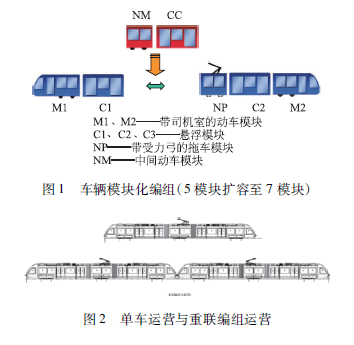
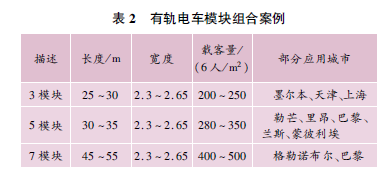
The stage of development of the new district determines the difference in its transportation needs. Taking Hangzhou Hangzhou Bay New District as an example, it is predicted that the first-phase peak hour passenger flow section of the backbone bus system will be about 2 000 person/h in the first phase, and 7 000 to 10 000 person/h in the long-term. The passenger flow has a large difference in the near and long term. The modern trams are initially grouped and operated in 3 modules, and later expanded to 5 or 7 modules, and can be connected to run at peak times to adapt to the traffic needs of different phases of the new district, and will form a good interaction with the development of the new district. 3.1.2 High flexibility of vehicle cross-line operation
Modern tram lines are leveled at intersections, vehicles can be operated across lines, and the line network is fixed but the operation network can be adjusted as needed. For example, the Gothenburg tram in Sweden has multiple lines in the center of the city. The length of the 80 km rail transit network is 251.6 km. Similarly, the length of the tram line in Dresden, Germany is 131.4 km. Up to 300 km (see Figures 3 and 4).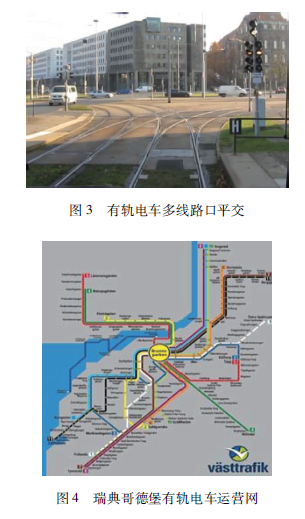
The development of the new district is mostly aimed at comprehensive functions. Ningbo Hangzhou Bay New Area develops the tourism industry based on the traditional manufacturing industry, and plans to travel 15 million passengers per year. At the same time, the functional division of the new district is divided into blocks, the Western Wetland Recreation Area, the Central Business New City, and the Eastern Smart Industry Zone. Therefore, the tourist flow and commuter passenger flow in the new district are not only different in distribution time, but also in different distribution areas. In view of the characteristics of the cross-line operation of trams, the first phase of the Hangzhou Bay New Area project network can realize the commuting of working days in the service industry area, and reduce the commuter lines by deploying vehicles to increase the connection of wetland recreation areas. line. This new area can meet the multi-regional, multi-stage, multi-period passenger flow demand with a small vehicle input cost [6] (see Figures 5-7).
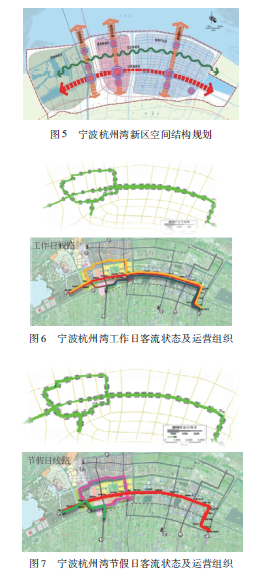
3.2 Road rail transit system anchoring new area development axis
Among the many factors affecting urban development, transportation has a leading role in urban spatial layout. As a road rail transit system, the tram has a lower possibility of relocation than the conventional road bus system, and the corridor has higher stability. A tram line will be placed on the planning axis of the new district, which will show the future development prospects of the new district to the possible “customer group” and the determination of the government to develop the area to meet the needs of the pre-development period, and correspondingly build a batch of public The supporting facilities will provide certain basic conditions for the follow-up construction, and the urban development axis will be more clear.
The modern tram is set to the ground with the ground, and the width of the two-lane line is 7 to 10 m. Many large cities in China, such as Kunming and Chengdu, have planned tram lines in urban centers, which ended up due to the conditions of the urban central roads and the huge impact on the current traffic. The width of the red line of the main road in the new district is more than 40 m. The building is reddish and wide. After the rail line is installed, the two-way four-lane road can still be reserved. The road construction conditions are suitable. At the same time, the road traffic flow in the early stage of the new district is small, and the construction has The tram has a relatively small impact on road traffic, and the earlier construction is conducive to cultivating the order of the trams that are preferentially accessible (see Figure 8).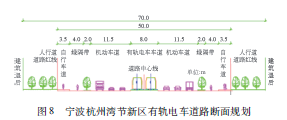
3.3 “Short and fast” Construction promotes industrial development in the new area
3.3.1 “Short and fast” system features meet the requirements for rapid start-up of new district projects
Most of the new districts are driven by industrial projects. In order to obtain more development opportunities, the projects generally start faster and the infrastructure supporting the project should be started simultaneously. On the other hand, the new district is in the early stage of development, and the government has fewer financial revenues. Construction is constrained by economic capabilities. The modern tram project is approved in the province, and it does not need to be reported to the National Development and Reform Commission like the subway or light rail. The approval speed is fast. At the same time, the system technology is mature and the construction period is short. Generally, it only takes 1 to 1.5 years, such as the Shenyang Weinan New Area. The first phase of the tram was officially started in April 2012, and was commissioned in July 2013. It took about one and a half years to complete the network construction and operation commissioning with a total length of 59.5 km. At the same time, the cost of trams as a rail system is relatively low, and the cost per kilometer is about 80-180 million yuan [7], far lower than the cost of subways and light rails. The tram can be called a “short and fast” rail transit project, and the new district has the ability to build as quickly as possible.
3.3.2 Introduction of new industrial chain by trams Promoting industrial development in new areas
The domestic tram industry is on the rise, and the introduction of key equipment (such as the production of tram vehicles) in the tram project has become one of the hot spots in the current development of the tram industry. Among the many cities that build trams, some of the city's trams use nearby purchase methods. For example, Nanjing and Suzhou use vehicles from CSR Puzhen, Shenyang uses vehicles from Beijing-Changzhou, and some cities invest locally. Localized procurement of vehicles has been realized. For example, Guangzhou Haizhu, Chengdu Xinjin, and Ningbo Minzhou are all introducing CSR or CNR funds and technology, building local rail transit vehicle industrial parks, introducing the vehicle assembly industry, and driving upstream and downstream and related Industrial development.
3.4 High quality meets the high-end, green and intensive needs of the new district
Modern trams are a relatively high-quality public transportation system that is comfortable, safe, beautiful, environmentally friendly, and highly integrated (see Figure 9). It is powered by electric power and has almost no emissions. The measured noise at a distance of 7.5 m is only 75 dB, which is lower than that of a single-lane motor vehicle. On the ground, Kelly's body can also be part of the urban landscape. In the traditional public transport vehicles, modern trams are more in line with the core objectives of the “high-end, green, intensive” of the new district [8 10].
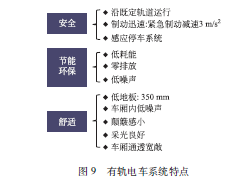
4 Highlights of the implementation of tram planning in the new district
4.1 Network planning should have both goal orientation and demand orientation
The low initial passenger flow is a common problem in the development of trams in the new district. For example, the network scale of the first phase of Shenyang Weinan tram is 60 km, and the passenger flow of the whole line is less than 40,000 times/d. The number of passengers on the single line of Shanghai Zhangjiang and Tianjin Binhai New Area is less than 5,000 passengers/d. To sum up the reasons, first, the current size is small, and the overall passenger flow in the region is small. Second, because the initial tram construction line is small, the service interval is low, and the passengers' choice is low. Therefore, it is suggested that under the premise of a reasonable estimate of the size of the city, the planning of trams needs to be both goal-oriented and demand-oriented, and build on demand and moderately ahead. In the initial stage of construction and operation, the small group should be high-density, and the expansion conditions should be reserved in the long-term.
4.2 Line selection to strengthen hub coverage
The initial development of the population and municipal services in the new district depend on the old city and the demand for contact with the existing built-up areas is high. Therefore, the tram network that plays the role of the backbone bus must cover the external transportation hub, and try to cover it in the first phase of the route selection.
4.3 System design combines the dual characteristics of rail transit and road traffic
The tram has both the characteristics of road traffic and rail transit, and the system design is compatible with fast rail transit and conventional ground bus technology. For example, when designing a tram driving organization, it is necessary to predict the traffic flow of the motorway at the level crossing of the rail transit, analyze the signal control scheme of the intersection, and adopt dynamic simulation test if necessary; for the planning stability, the long-term reserved rail transit line is on the road. During construction, it is necessary to make reservations for key nodes such as sections and bridge loads, create conditions for later implementation, and reduce secondary demolition and construction.
4.4 Flexible selection of multiple investment and financing modes during the construction phase
In the construction of trams, the new district can flexibly choose different financing modes and rationally raise funds according to the actual financial situation. For example, the traditional model adopted by Guangzhou and Suzhou is responsible for civil construction and equipment procurement by the subway company. The BT model adopted by Nanjing is responsible for civil construction and equipment procurement and installation by the general contractor. The BT+O mode adopted by Shenyang Weinan New District is The contractor (Changke Vehicle Factory) is responsible for civil construction and equipment procurement and installation, and entrusts Veolia to be responsible for operation management.
5 Conclusion
The modern tram system has good ductility, flexible operation organization, new industry development, and can adapt to the low-level and high-level development of the new district. The comprehensive cost is low, the approval is simple, and the financing is diversified to adapt to the high-speed and flexible of the new district. Development requirements; non-polluting, low-noise, fast and comfortable, safe and reliable high-quality features meet the core development goals of the new district's "high-end, green, intensive". The road traffic conditions in the new district also meet the space requirements for the implementation of trams. Therefore, compared with existing mature built-up areas, the applicability of modern trams in the new district has more typical characteristics. However, in the implementation planning, careful consideration should be given to passenger flow risks, coordination with road traffic and financing.
















 RCCN WeChat QrCode
RCCN WeChat QrCode Mobile WebSite
Mobile WebSite



